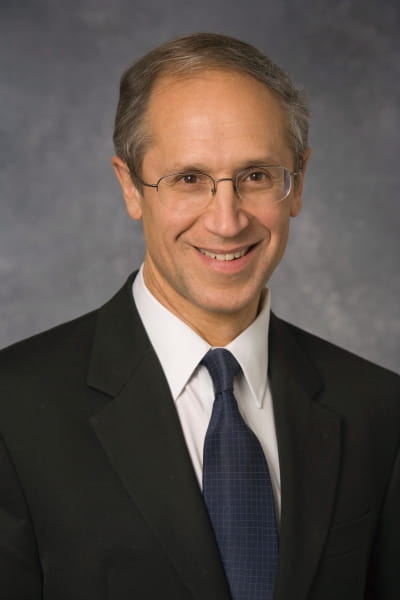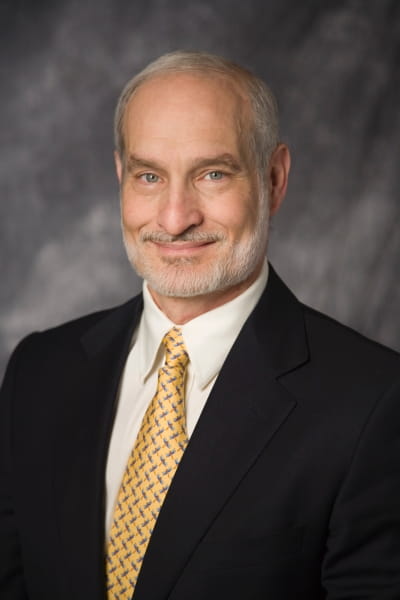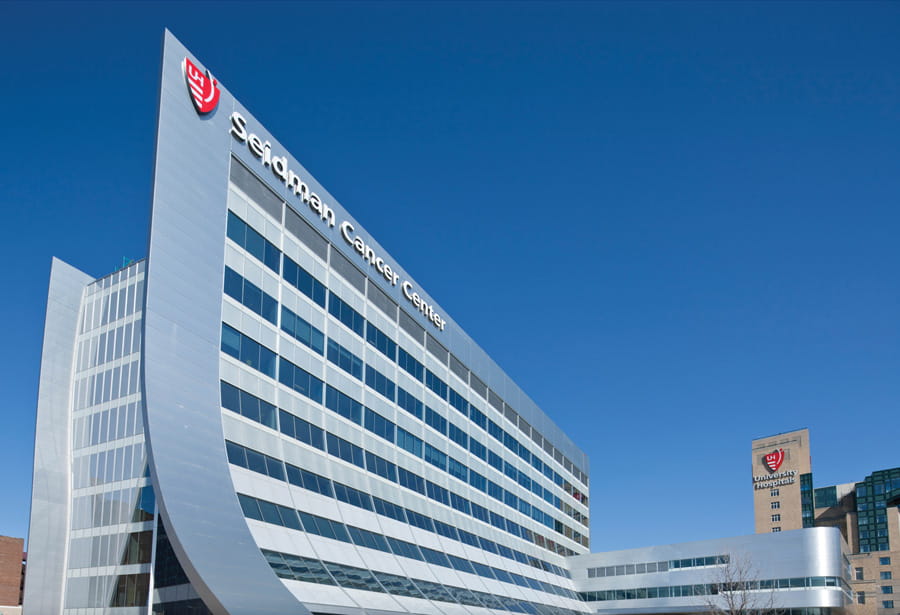Cell Production Facility Presents Options
January 05, 2017
Leading-edge cell therapies both a tradition and a promise at UH Seidman Cancer Center
Innovations in Cancer – Winter 2017 – View Full PDF
 Stanton L. Gerson, MD
Stanton L. Gerson, MD Hillard Lazarus, MD
Hillard Lazarus, MDUniversity Hospitals Seidman Cancer Center is at the forefront of cell therapy, with multiple clinical trials available to patients that will ultimately lead to new treatments.
Using living cells to replace, regenerate or enhance a healing process in the patient’s body is facilitated in large part by UH Seidman Cancer Center’s Cellular Therapy Service. At the center of this program stands the Cellular Therapy Laboratory, designed to support investigator-initiated trials and produce high clinical grade cellular therapy products to benefit patients. This 3,000-square-foot, state-of-the-art facility, located in the Wolstein Research Building at Case Western Reserve University, has six ISO7 clean rooms that control environmental conditions and limit airborne particles.
The Cellular Therapy Laboratory manufactures large numbers of cells for physicians who use them in clinical trials targeting cancer, as well as conditions such as multiple sclerosis and cystic fibrosis. State-of-the-art equipment enhances cell manufacturing efficiency and extends the possibilities for new treatments.
The preparation and use of cellular products requires adherence to the rigorous regulations set forth by the U.S. Food and Drug Administration. The facility also is accredited by the Foundation for the Accreditation of Cellular Therapy.
Historical Leaders, Breaking New Ground
UH Seidman Cancer Center has long been a leader in stem cell therapy. Researchers here have built on more than 30 years of groundbreaking work using stem cells to treat cancer and other diseases. UH was among the first in the country to perform bone marrow transplants in 1976, and today is still on the leading edge of this life-saving procedure. Hillard Lazarus, MD, Director, Novel Cell Therapy, UH Cleveland Medical Center and Professor of Medicine, Case Western Reserve University School of Medicine, Stanton Gerson, MD, Director, University Hospitals Seidman Cancer Center and Case Comprehensive Cancer Center at Case Western Reserve University and Asa and Patrick Shiverick – Jane Shiverick (Tripp), Professor of Hematologic Oncology, Case Western Reserve University School of Medicine, and their colleagues pioneered new treatment approaches for stem cell transplant, including transplantation of stem cells from umbilical cord blood for patients without a donor match.
Translating work from the lab to patients has inspired UH physicians to continue to advance the field. Dr. Lazarus and his colleagues have done pioneering work in bone marrow and stem cell transplantation and have developed new treatment approaches to help patients battle their cancer more successfully than ever before. His team developed the use of stem cells from umbilical cords to treat leukemia and also discovered a new type of stem cell, mesenchymal (MSCs).
For his part, Dr. Gerson, an expert in stem cells and DNA repair, has identified a gene therapy that creates drug-resistant stem cells capable of selectively repopulating the recipient without the need for high-dose, toxic chemotherapy. This strategy is now used experimentally and clinically throughout the country. He has developed clinical trials on using MSCs as a therapeutic infusion for blood stem cell transplantation and for the correction of genetic disorders, as well as inhibitors of DNA repair to improve the efficacy of anti-cancer agents.
Dr. Gerson’s collaborated in his early research Arnold Caplan, PhD, Professor of Biology at Case Western Reserve University. Together, they produced publications and patents related to MSCs and then oversaw four first clinical trials using these cells. Dr. Gerson has also developed transgenic mouse models that examine the role of critical genes in the stability of stem cell populations over the lifetime of the animal. These studies may predict stem cell diseases of aging and cancer. His research has generated 12 patents in the area of gene therapy and cancer drug development that have been licensed to three companies.
Current Cell Therapy Trials at UH Seidman Cancer Center

UH Seidman Cancer Center faculty are building on a strong legacy of cell-based cancer therapies with these clinical trials:
- Breast cancer vaccine: Joseph Baar, MD, PhD, is piloting a new approach for select women with metastatic breast cancer – a vaccine targeting tumor blood supply. Attempts to develop a breast cancer vaccine have repeatedly met with failure because the cancer cells evade immune cells, either by changing or not expressing the molecular targets that the immune cells seek.
- Genes and glioblastoma: Neuro-oncologist Andrew Sloan, MD, and Dr. Gerson have developed a novel trial for glioblastoma patients. It involves removing hematopoietic stem cells from the patient’s body, reengineering them in the lab, and then re-transplanting them. By introducing a drug-resistant gene, the treatment team can escalate the chemotherapy dose without as much concern for the toxicity to the bone marrow.
- T cells and melanoma: Julian Kim, MD, has developed a novel technique to generate large numbers of activated T cells, which can then be transferred back into the same patient to stimulate the immune system to mount a protective immune response against the disease. The clinical team aims to use this technique – only offered at a few institutions worldwide – in attacking other cancers.
- Hematologic malignancies: Stem Cell Transplant Director Marcos de Lima, MD, new to UH from M.D. Anderson Cancer Center, has shown that injecting combined human cord blood cells and mesenchymal stromal cells (MSCs) directly into bone marrow results in better engraftment in mice. He and his team are now testing the approach in adult patients with hematologic malignancies. This project addresses the lack of matched donor cells, a persistent challenge in hematologic malignancies.
- T cells to treat viral infections in stem cell transplant patients: Dr. de Lima and Paolo Caimi, MD, will soon launch a trial using virus-directed T cells from the transplant patient’s donor or donor’s family member to treat opportunistic viral infections, including CMV, BK, Epstein-Barr and adenovirus. A new automated cell processor will make the process quicker and easier to manage.
- Personalized vaccine for multiple myeloma patients: Dr. Lazarus and Ehsan Malek, MD, are participating in a national effort through the Blood and Marrow Transplant Clinical Trials Network (BMT CTN) to test a personalized vaccine against multiple myeloma derived from the patient’s own tumor cells after autologous hematopoietic stem cell transplant.
- Natural killer (NK) cells and hematologic malignancies, sarcoma and colon cancer: Having unlocked a secret to generating NK cells in large numbers, David Wald, MD, PhD, and his colleagues are exploring their potential against hematologic malignancies, sarcoma and colon cancer, using a novel fusion protein to support NK cell survival and proliferation.
For more information on any of these trials or to refer a patent, email CancerInnovations@UHhospitals.org.
Tags: Novel Therapies, Stem Cell


